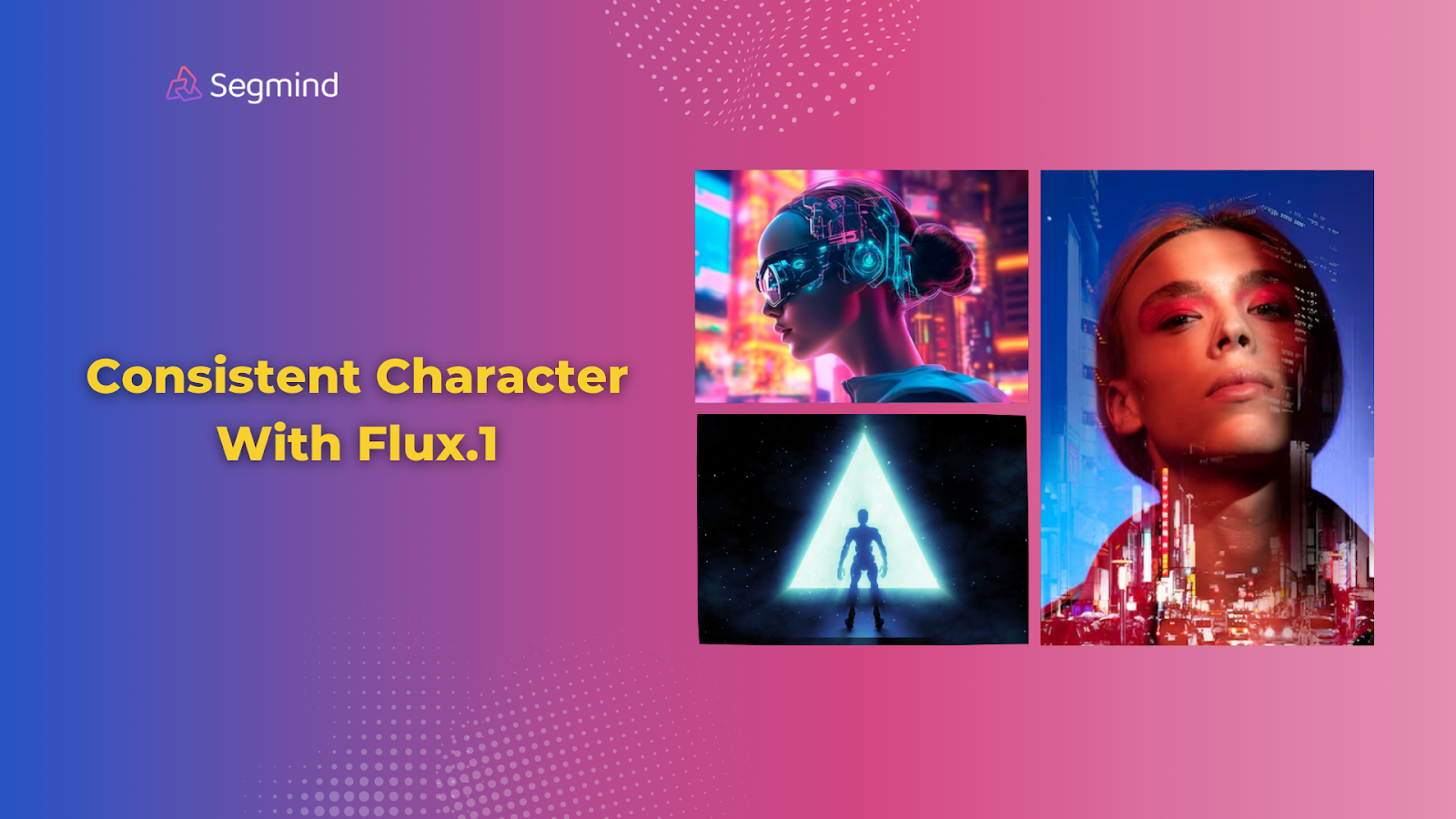Create Consistent Character With Flux.1 With 1 Image
Learn how to create perfect character variations using just one image with Flux.1. Explore best practices and tips for faster results without any complex setup.

Character creation can be challenging. You want your character to look the same in every scene, but getting that consistency isn’t that easy. Most AI tools need multiple reference images, complex settings, and hours of tweaking to get it right.
But what if you could create consistent characters with just one image? That's where Flux.1 comes in. This AI model helps you generate variations of your character while keeping their core features intact—from facial details to clothing style.
This guide shows you exactly how to use Flux.1 to create consistent characters that stay true to your vision. Let’s get started!
What Is Flux.1 And How It Helps In Consistent Characters Generation?
Flux.1 is an AI model built specifically for creating consistent characters across different poses and scenes.
Unlike other models that need multiple reference images, Flux.1 needs just one image to understand and maintain your character's unique features. This means you can spend less time preparing reference images and more time creating variations of your character.
The model analyzes your input image at a deep level, breaking down every detail from facial structure to clothing patterns. When you create new poses or scenes, Flux.1 applies these learned details to ensure your character stays consistent.
Here are the key features that make Flux.1 stand out:
- Processes character details in under 30 seconds with high accuracy in feature retention
- Maintains exact color values and shading patterns across different lighting conditions
- Preserves intricate details like jewelry, scars, and unique markings down to 1-pixel precision
- Supports resolution up to 1024x1024 pixels without losing quality
- Handles multiple art styles from anime to photorealistic without compromising character identity
For example, when working on game development projects, Flux.1 helps maintain character consistency across cutscenes, dialogue screens, and promotional materials.
In animation workflows, you can quickly create storyboards and character sheets without redrawing the same features repeatedly. The model understands the subtle details of your character's design, letting you focus on posing and expression rather than worrying about whether the eye shape or nose structure matches the original.
For brand design and marketing, Flux.1 excels at creating consistent character variations. You can place your character in different seasonal themes or promotional settings while maintaining their recognizable traits. The model keeps brand colors exact and ensures logo elements or distinctive features remain pixel-perfect across all variations.
The technical process behind Flux.1's consistency is based on advanced pattern recognition. It creates a detailed map of your character's features and uses this as a reference for new generations. This means even small details like the way light reflects off metal armor or how fabric folds around joints remain consistent across different poses.
Now that you know about Flux.1 and its capabilities, let’s take a closer look at the platform that makes consistent character creation easy and efficient.
How Segmind's PixelFlow Makes Character Creation Easier
Segmind is an AI platform that gives you direct access to all Flux.1 models, from basic Flux.1 Schnell, Flux.1 Dev to Flux Pro versions. With Segmind, you get the latest model updates as soon as they're released, without dealing with complex setups or installations.
The platform's standout feature is PixelFlow—a visual workflow builder that lets you create character variations without writing code.
PixelFlow turns complex AI processes into simple drag-and-drop actions. You can connect different nodes (like image input, Flux.1 processing, and output generation) to build your character creation pipeline in minutes.
When working with Flux.1 in PixelFlow, you start by uploading your reference image to the input node. The platform automatically handles the image processing and applies the Flux.1 model's character analysis. You can adjust settings like output resolution (up to 1024x1024) and processing steps (between 20-50 for optimal results) directly in the interface.
The AI Character Swap template in PixelFlow comes pre-configured for character consistency tasks. It includes the right node connections and default settings for Flux.1, saving you hours of setup time. You can modify these settings through simple sliders and dropdown menus to fine-tune your results.
Real-time previews let you see how changes affect your character's appearance. Need a different pose? Type a new prompt. The template updates your preview instantly, so you can experiment until you get exactly what you want.
For game development workflows, PixelFlow's batch processing handles multiple character variations simultaneously. You can generate a complete set of character expressions, poses, or outfit variations in one go. The platform maintains consistency across all outputs while processing up to 100 variations per batch.
Animation teams can benefit from PixelFlow's ability to create consistent character sheets quickly. The template maintains your character's features across different angles and expressions, essential for keeping animation frames consistent. You can export your generated images in various formats (PNG, JPEG, or WebP) at different resolutions to match your project's needs.
When creating brand assets, PixelFlow's template helps maintain character consistency across marketing materials. You can generate variations of your mascot for different seasons or campaigns while keeping their core features intact. The platform preserves brand colors with exact RGB values and ensures logo elements stay consistent in every variation.
Now that you know about the best platform to create consistent characters, let’s explore some of the best practices and tips for effective outputs.
Best Practices And Tips For Consistent Character Generation
Getting the best results with Flux.1 comes down to your input image quality and processing settings. Here are some best practices and tips to keep in mind to ensure consistent character generation:
- Use a reference image with at least 1024x1024 resolution and RGB color mode to ensure Flux.1 captures all character details at maximum quality.
- Set your character against a solid background color in the input image, which helps the model focus on essential features rather than processing background elements.
- Process your character generations with 30-50 denoising steps for optimal detail retention—fewer steps can miss subtle features while more steps rarely improve quality.
- Write specific prompts that describe your desired pose and setting in detail, like "full body shot, standing pose, three-quarter view, outdoor lighting" instead of vague descriptions.
- Keep character proportions consistent by using the same aspect ratio (1:1 square works best) for both input and output images.
- Test your character in basic poses first before attempting complex actions or dynamic scenes to ensure core features stay intact.
- Save your successful generation settings as templates in Segmind's PixelFlow to quickly replicate good results across multiple character variations.
Final Thoughts
Creating consistent characters with Flux.1 simplifies your creative workflow in meaningful ways. You no longer need multiple reference images or complex character sheets to maintain consistency.
With just one high-quality reference image, you can generate countless variations while keeping your character's core features intact. The model's ability to preserve details down to individual pixels means your character stays recognizable across different poses and scenes.
When combined with Segmind's PixelFlow platform, character creation becomes even more streamlined. The visual workflow builder turns complex AI processes into simple drag-and-drop actions.
You can adjust settings in real-time, preview results instantly, and save successful workflows as templates. This means faster iteration cycles and more time spent on creative decisions rather than complex setup.
Ready to speed up your character creation process? Get started with Segmind now for free!

